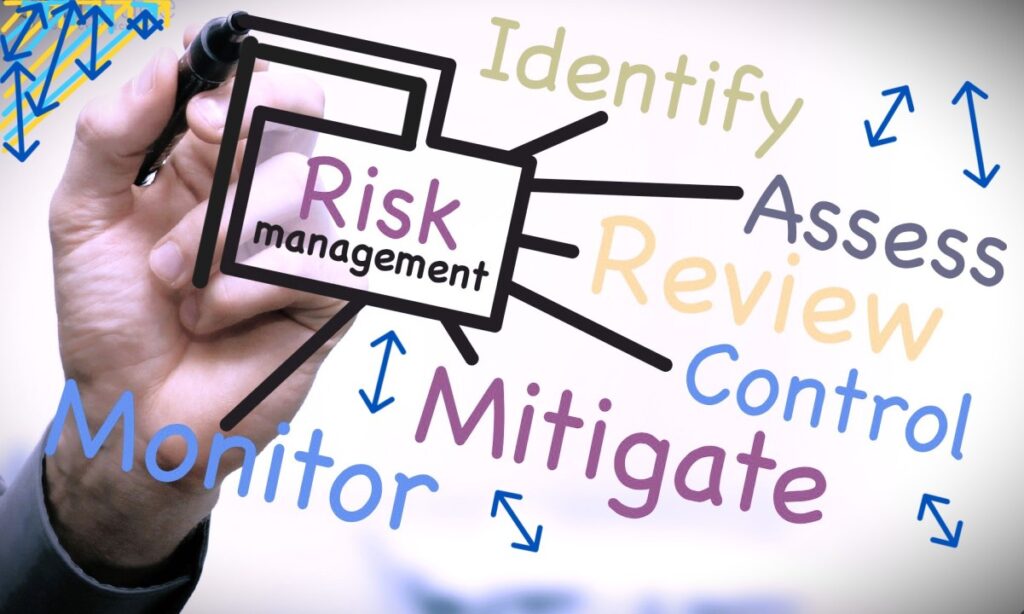Custody companies, depository and clearing houses and central counterparties play a role in the smooth functioning of financial markets. They provide services, like asset safekeeping and trade settlement. However it is important to recognize that these institutions face risks that can potentially destabilize them and even impact the financial system. Consequently implementing risk management practices becomes imperative for custody companies, depository and clearing houses as well as central counterparties. This article aims to give an overview of the risk management practices employed by these entities including the types of risks they encounter strategies they adopt for risk mitigation and the integration of technology in their risk management processes. Moreover it also sheds light on the framework governing custody companies and central counterparties.
1. Overview of Risk Management in CDCs, CSDs, and CCPs
Why is risk management important for CDCs, CSDs, and CCPs?
Risk management holds significance for custody companies, depository and clearing houses as well as central counterparties due to their responsibility in handling significant volumes of securities, cash transactions and settlement activities. Inadequate risk management can result in losses that have the potential to disrupt market stability and harm investors interests. Therefore prioritizing risk mitigation is crucial, for upholding the integrity of markets while ensuring trust among participants.
The Role of Risk Management in Ensuring Market Stability
Effective risk management in CDCs, CSDs, and CCPs helps to ensure market stability by minimizing the likelihood of financial disruptions and failures. By identifying and mitigating risks, risk management helps prevent systemic risks from spreading throughout the market. Additionally, effective risk management helps to ensure that financial transactions are settled promptly and accurately, reducing the potential for financial losses or disputes.
2. Types of Risks in CDCs, CSDs, and CCPs
Credit Risk
Credit risk refers to the risk of loss due to the failure of an entity to fulfill its contractual obligations. In CDCs, CSDs, and CCPs, credit risk arises from the potential failure of counterparties to settle trades or meet margin requirements.
Operational Risk
Operational risk refers to the risk of loss resulting from inadequate or failed internal processes, systems, or human error. In CDCs, CSDs, and CCPs, operational risk can arise from technology failures, cyberattacks, and human error.
Systemic Risk
Systemic risk refers to the risk of widespread market disruption caused by a failure by one or more entities. In CDCs, CSDs, and CCPs, systemic risk can arise from the interconnectedness between market participants, such as clearing members, settlement banks, and other financial intermediaries.
Liquidity Risk
Liquidity risk refers to the risk of loss resulting from the inability to meet payment obligations as they become due. In CDCs, CSDs, and CCPs, liquidity risk can arise from a lack of available cash or securities to settle trades in a timely manner.
Legal and regulatory risk
Legal and regulatory risk refers to the risk of loss resulting from non-compliance with laws and regulations. In CDCs, CSDs, and CCPs, legal and regulatory risk can arise from changes in laws and regulations, non-compliance with existing laws and regulations, or litigation risk.
3. Risk Management Strategies in CDCs, CSDs, and CCPs

Risk Management Strategies in CDCs, CSDs, and CCPs
Risk identification strategies AMEDA
CDCs, CSDs, and CCPs can identify risks by conducting regular risk assessments, monitoring market developments, and staying informed of changes in laws and regulations. Risk identification strategies also involve assessing the specific risks associated with counterparties and transactions and identifying emerging risks.
Risk assessment strategies
Risk assessment strategies involve quantifying and prioritizing risks and evaluating the potential impact of identified risks on the organization and the broader market. These strategies also involve stress testing and scenario analysis to evaluate the potential impact of extreme events on the organization and the market.
Risk Mitigation Strategies
Risk mitigation strategies involve implementing measures to reduce or eliminate identified risks. Examples of risk mitigation strategies include diversifying counterparties, increasing margin requirements, implementing controls to reduce operational risk, and maintaining sufficient liquidity.
Risk monitoring strategies
Risk monitoring strategies involve ongoing monitoring of identified risks and the effectiveness of risk mitigation strategies. These strategies also involve regular reporting to senior management and relevant stakeholders, as well as close collaboration with regulators and other market participants to ensure systemic risks are effectively managed.
4. Role of Technology in Risk Management for CDCs, CSDs, and CCPs
Technology plays a crucial role in risk management for CDCs, CSDs, and CCPs. These institutions use advanced technologies to identify, mitigate, and monitor risks effectively.
How Technology is Used to Identify Risks
CDCs, CSDs, and CCPs leverage sophisticated software and systems to identify potential risks. These technologies utilize algorithms and data analytics to scan markets and detect any anomalies that may pose a threat to the institution. Automated surveillance systems are put in place to monitor market data and flag any unusual activity that may require further investigation.
How Technology is Used to Mitigate Risks
Institutions use various technologies to mitigate risks, including enterprise risk management systems, fraud detection systems, and blockchain technology. These systems enable CDCs, CSDs, and CCPs to identify and mitigate potential risks at an early stage, which can prevent significant losses.
How Technology is Used to Monitor Risks
CDCs, CSDs, and CCPs use real-time monitoring tools to track and monitor changes in the market and detect any unusual activities that may pose a risk. Advanced tracking technologies enable these institutions to monitor assets and transactions effectively, increasing the level of transparency and reducing the risk of fraud.
5. Regulatory Environment for CDCs, CSDs, and CCPs

Regulatory Environment for CDCs, CSDs, and CCPs
The regulatory environment for CDCs, CSDs, and CCPs is stringent, with regulators playing a fundamental role in risk management.
The Role of Regulators in Risk Management
Regulators are responsible for supervising and ensuring that CDCs, CSDs, and CCPs maintain adequate risk management procedures. Regulators work closely with these institutions to identify and mitigate risks effectively and put in place appropriate measures to prevent future risks.
Regulatory Requirements for CDCs, CSDs, and CCPs
CDCs, CSDs, and CCPs are required to comply with various regulatory requirements to ensure adequate risk management. These requirements include maintaining a robust risk management framework,
implementing effective controls over their operations and providing regular reporting to regulators.
Conclusion and Future Outlook for Risk Management in CDCs, CSDs, and CCPs
Effective risk management is vital for the success of CDCs, CSDs, and CCPs. Technology plays a crucial role in identifying, mitigating, and monitoring risks, while regulators ensure compliance with regulatory requirements.
Key Takeaways from Effective Risk Management in CDCs, CSDs, and CCPs
Effective risk management requires a robust risk management framework, including adequate controls and real-time monitoring tools. Institutions must implement these frameworks and work closely with regulators to maintain stability and prevent significant losses.
The Future of Risk Management Technology and Regulations for CDCs, CSDs, and CCPs
Risk management in CDCs, CSDs, and CCPs has a bright future. Artificial intelligence and blockchain, for example, are projected to play a larger role in risk management in the future. To guarantee sufficient risk management, regulators are likely to continue to improve their monitoring and regulatory requirements.
Finally, good risk management is critical for the stability of custodial companies (CDCs), central depository and clearing houses (CSDs), central counterparties (CCPs), and the financial system as a whole. These institutions can reduce potential losses and promote market stability by recognizing, analyzing, reducing, and monitoring risks. While regulators play a vital role in ensuring that CDCs, CSDs, and CCPs follow regulatory requirements, it is the institutions’ responsibility to create and maintain appropriate risk management policies. With the ongoing development of financial markets and new technology breakthroughs, CDCs, CSDs, and CCPs must stay diligent in their risk management efforts to assure the financial markets’ sustained safety and stability.














